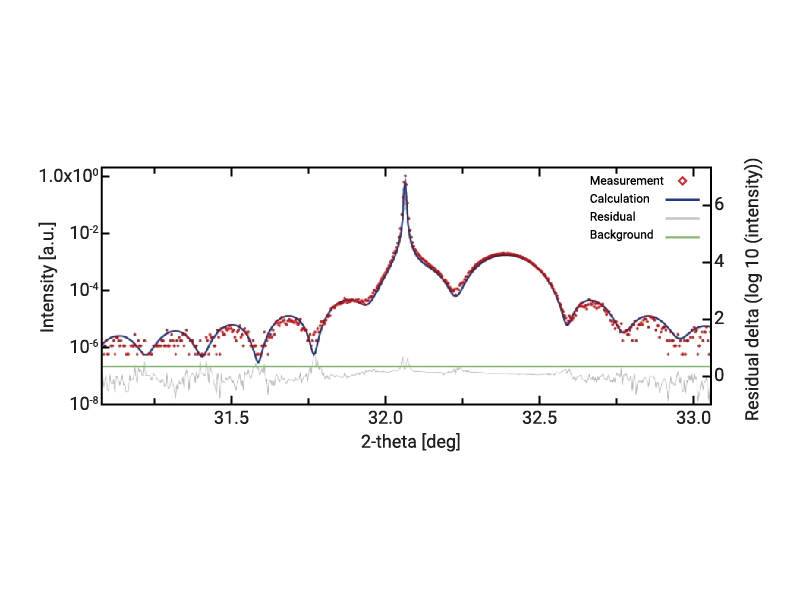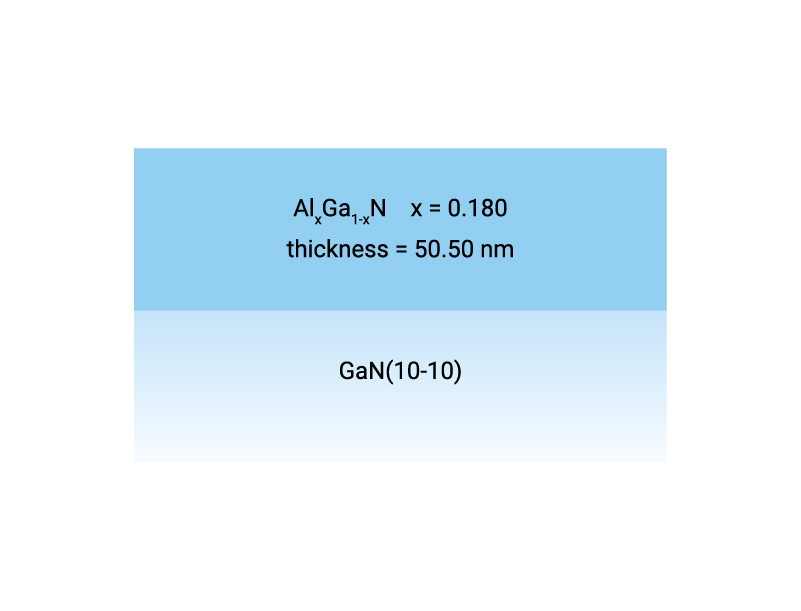Background
AlGaN has a wide variety of applications including LEDs (light-emitting diodes) in blue to ultraviolet region, blue semiconductor lasers, detectors of ultraviolet radiation and HEMT transistors. To fine tune the performance of each device, it is essential to understand the relation between the epitaxial film growth conditions and the resulting film properties such as film thickness and AlN to GaN ratio. X-ray rocking curve analysis techniques have been used to study epitaxial film structures of AlGaAs, InGaAs, SiGe etc., and more recently AlGaN and InGaN. However, due to the complexity of the rocking curve calculations, analysis programs often use approximations and support only simple systems such as cubic or c-axis oriented hexagonal. Those programs are not flexible enough to study today's advanced epitaxial structures including AlGaN/GaN or InGaN/GaN epitaxial films on sapphire a-, m- or r-plane substrate. Those problems can be avoided by applying the extended rocking curve theory that does not use the conventional approximations or require simplicity of the system.
Investigation
Below is a rocking curve fitting analysis result of AlGaN/GaN on sapphire {1010} m-plane substrate. The high resolution X-ray diffractometer, SmartLab, was used for data collection and extended rocking curve analysis software, GlobalFit, was used for the layer structure analysis.

Below is the AlN composition and AlGaN layer thicknesses refined using the curve fitting analysis.

Rocking curve analysis is made easier by implementing the GlobalFit algorithm. The same analysis techniques shown here can be applied to various multilayer and superlattice structures as well.
